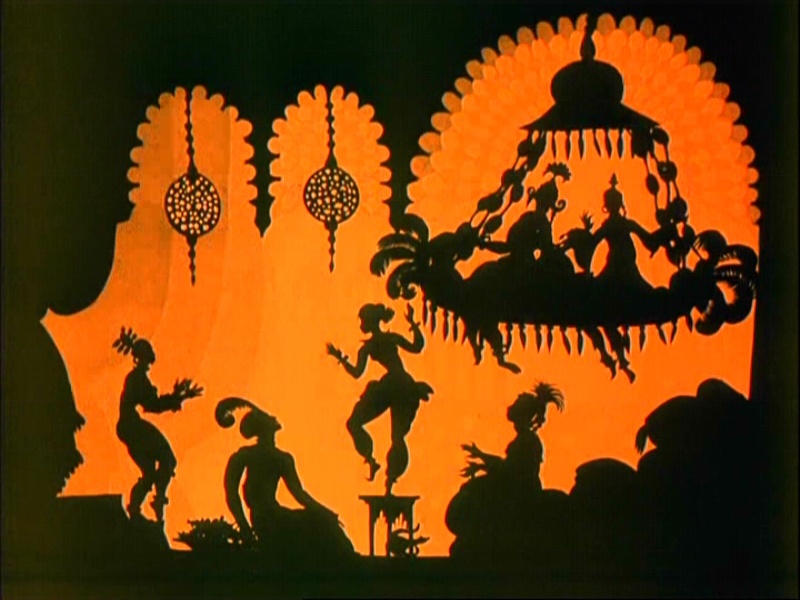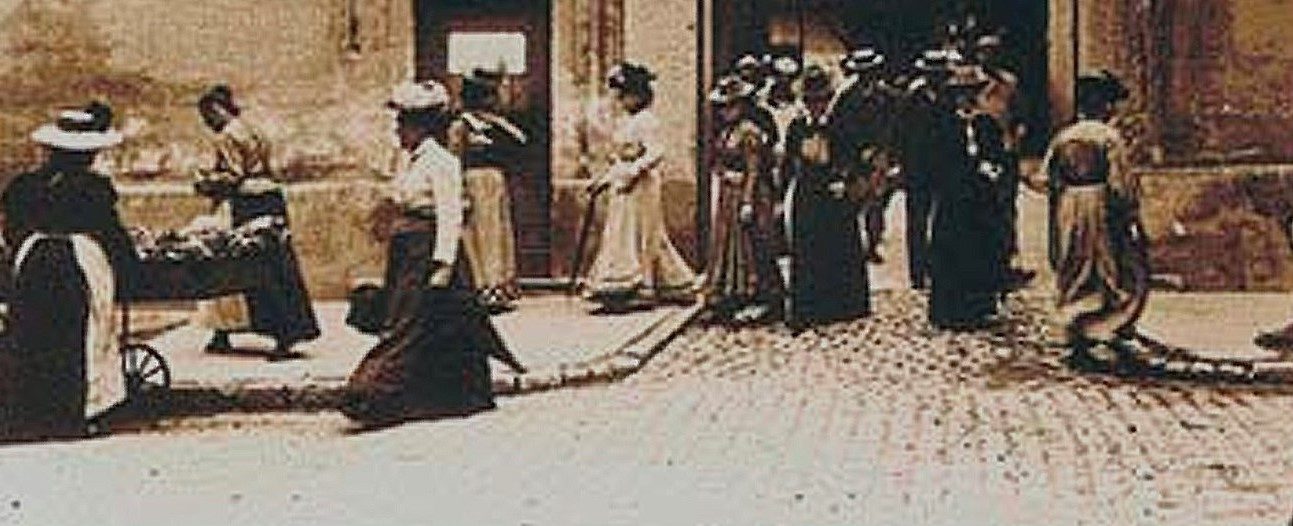Germany, 1926
Directed by Lotte Reiniger
(Animated movie)

Exoticism and Orientalism shape the five-act narrative and the narration of what is the oldest animated feature still available and certainly one of the very first animated movie lasting more than 60 minutes. The story of the titular prince pilfers the famous collection of folk tales from the Middle East known as “The One Thousand and One Nights”, showcases the powers of witchcraft and features silhouettes clearly inspired by the Java traditional art of Wayang – for this groundbreaking film relies only on articulated black silhouettes moving against colored backgrounds, a technique that was the trademark of director Lotte Reiniger ever since she started to make animated movies – short ones, for the delight of the audience but also for the ad business. Impressed with the Chinese art of cutting silhouettes when she was a child, Reiniger was eager to use her skills at cutting paper to create new worlds on film, instead of drawing characters, as it has already been done for some twenty years or so across the world (or just shooting actors).
The first consequence is that emotions must be conveyed in another way than the usual focus on faces that are now just black solid shapes delineating profiles, though in the case of the Achmed an eye is often carefully cut out. This is why articulating the paper puppets Reiniger exquisitely cut matter so much: rarely gestures were so essential to express what a character experiences and these little bits of paper pull it off in a fascinating, moving way. Graceful or vehement gestures make feelings genuine and action thrilling.
But that fluid, agile use of cut papers soon opens up new possibilities as the core of the story pits rival magical powers against each other: one form changes into another, limbs collapsing into a ball and the ball extending and breaking up into new sets. Cunning or anger, malicious tricks or tremendous efforts, whatever the cause transformation is never ending, always surprising, an energy that props up the complex story and delves into the audience’s sense of horror and wonder.
The narrative deals with the troubles a wicked African magician is happy to sow to fulfill his lustful dream, to be with the daughter of the Caliph, Dinarsade. He faces first the anger of the young woman’s brother, Achmed, but he gets rid of him by cajoling the young man to ride a magical horse that would fly him far away. The prince struggles to gather how to lead the horse and comes back to Earth; when he does, he lands in a magical isle, Wak Wak, and falls in love with the queen Pari Banu. Both run away from the strange companions of the queen, actually a population of demons, and they reach China – but so does the African magician, keen on persecuting Achmed. But the bad man makes a mistake: he leaves Achmed on an island where lives the powerful witch who hates him. She is willing to help Achmed save Pari Banu, who has been brought back to Wak Wak where she could be executed and go back home. They meet Aladdin, a young tailor from the prince’s land who was manipulated by the African magician to grab a magical lamp. Aladdin did find a way to keep the lamp and to benefit from the work of the genies living in the lamp; he became a prince and the lover of Dinarsade – but once again the callous and devious African magician managed to wreak havoc, kidnapping the princess along the way. It is up to the witch to start the final battle against the bad guy even as the demons of Wak Wak are rushing to attack the young men and kill their former queen.
Evil forces are confronted head on: “Die Abenteuer des Prinzen Achmed – The Adventures of Prince Achmed” opens with the African magician getting ready to pay a visit to the Caliph, displaying skills at metamorphose that actually command much of the plot and the final victory over the nefarious elements is clinched, after all, by the terrible power of a dangerous witch. The few humans involved are brave but overwhelmed characters struggling to reach happiness in a world made up of dark, solid shapes lurking around to assert their baleful influence – a pessimism and a sense of horror that suits the Expressionist movement then dominating the German cinema. And like those troubling films, this animated movie offers a stunningly beautiful and bold imagery, a visual celebration of the ability of filmmaking to explore the darkest side of our imaginations and minds. This is a wonderful, compelling work of art where transmogrifying characters still manage to get transfigured by the power of love and courage.

